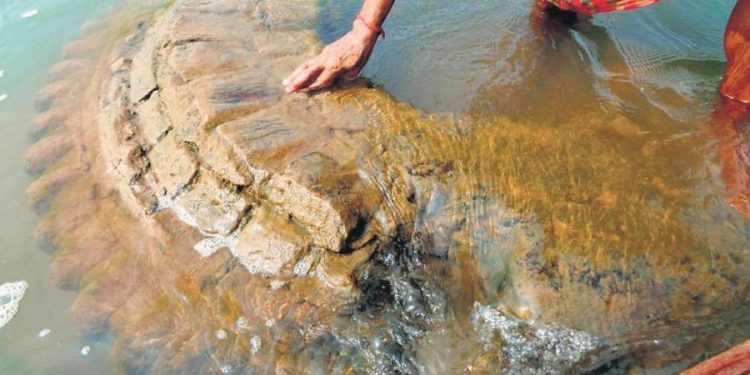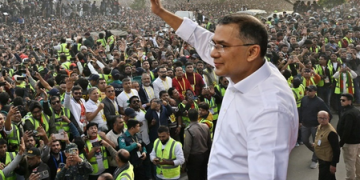Bhubaneswar: An expert team Tuesday went to Nayagarh to conduct a detailed study on circumstances that led to Gopinath temple being submerged in Mahanadi river.
The expert team comprising with archaeologist Rajiv Lochan Mishra from IIT and archaeologist Anup Ranjan Mishra from Rohilakhand University in Uttar Pradesh visited the temple in Nayagarh district Tuesday.
Nayagarh collector Pomo Tudu, DFO Dhanraj HD, Bhapur block BDO Satya Sundar Rout and vice-chairman of Zilla Parishad Gayadhar Parida accompanied the expert team during their visit.
Archaeologist Arup Ranjan Mishra informed that detailed documentation and research will be conducted on several aspects including when the temple was established and when it got submerged. For this, the expert team collected some soil sample from the temple top which re-appeared after 11-years.
The expert team will try to identify several points such if the temple was built on the riverbed or it was submerged owing to natural calamities.
“As it is being said that the temple is 60 to 70 ft high, we have to understand what was the activity and energy of the river that its sediments buried the temple,” said Mishra.
Sources said that locals found the ‘mastaka’, or the top part of the temple in the Mahanadi. It was last seen 11 years ago when the Mahanadi’s water level reduced significantly. Since the reemergence of the temple top, different theories are doing rounds. While some claim that the submerged village was then known as ‘Hatuari’, some others say ‘Barohi’ was the name of the village.
At the same time, archaeologist Surendra Mishra was sanguine about the existence of the ancient temple.
“Since the top portion of the temple still exists, it suggests that the whole structure including the foundation should be intact. It is believed that the temple was constructed during the time of Surya dynasty ruler Purusottam Dev,” Mishra said.
“During Kanchi Abhiyan, the then kings of Nayagarh, Ranpur, Khandapara and Daspalla assisted Purusottam Dev. In the years that followed, several temples were constructed under the auspices of Surya dynasty,” Mishra added.
However, local residents urged the government to take steps to recover the temple as it can throw more light on the temple architecture of that era.
PNN






































